Abstract
Dictyostelium discoideum and Escherichia coli were aerobically propagated in mixed continuous culture in a predator-prey relationship, and the effects of temperature and holding times were examined. Oscillations developed in the concentration of glucose, the limiting substrate for E. coli, and in the densities of the two populations, but eventually steady-state populations were reached. The experimental data were analyzed according to the Lotka-Volterra model for prey-predator relationships and by the Monod model for saturation kinetics. A comparison of the adequacy of the two models in describing predation is given.
Full text
PDF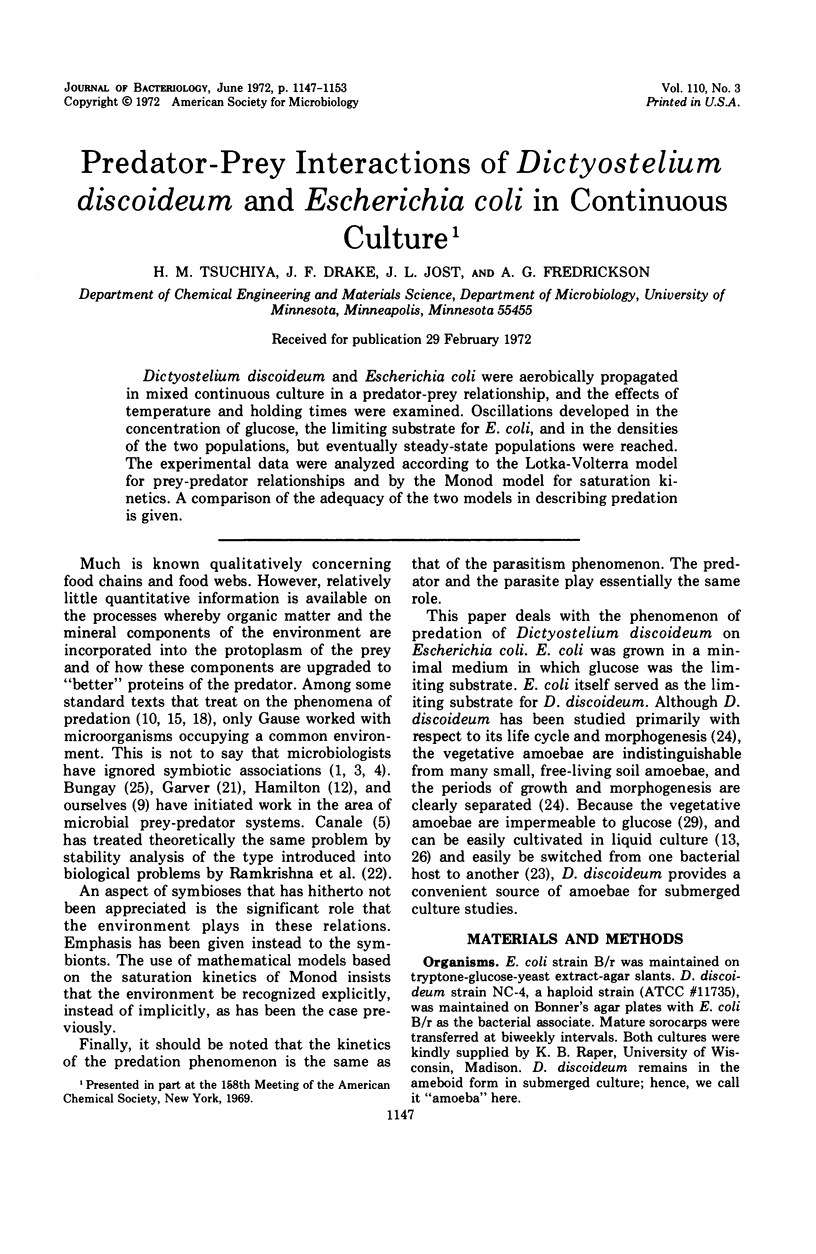
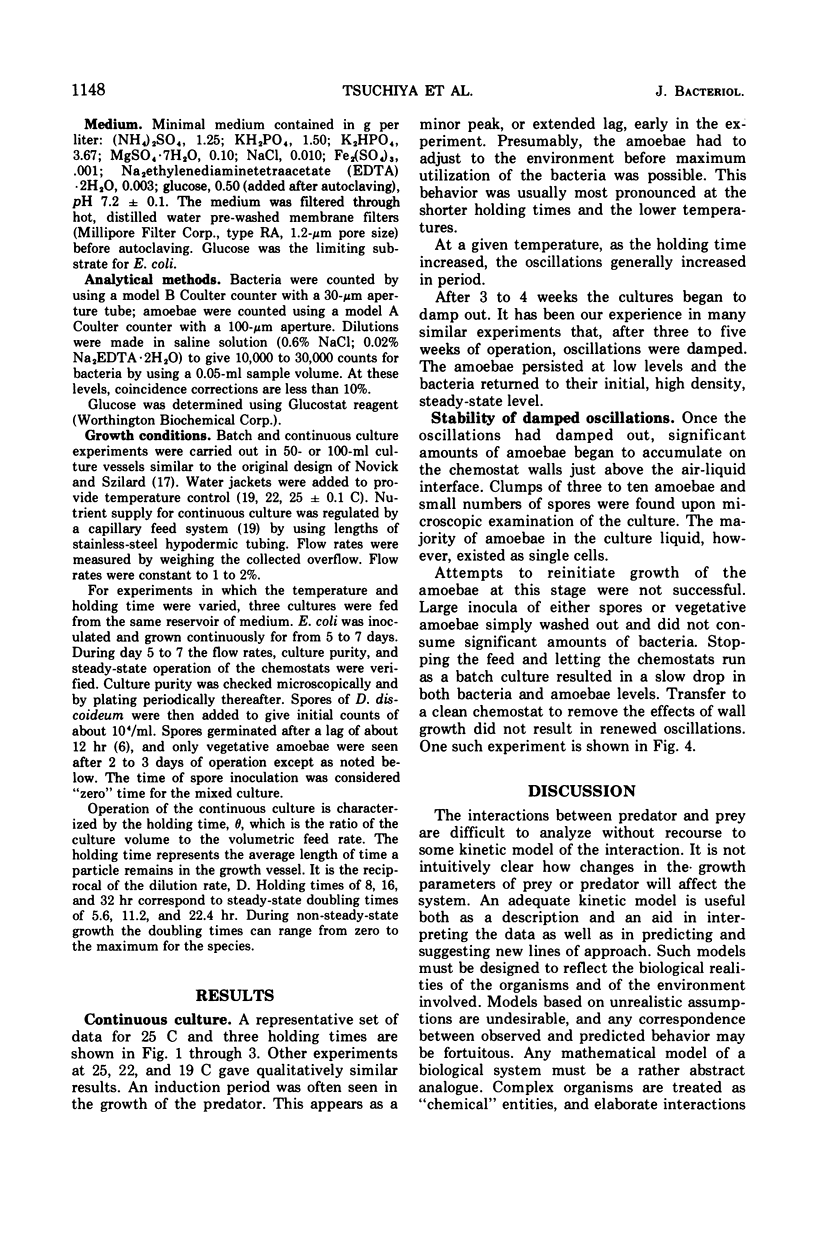

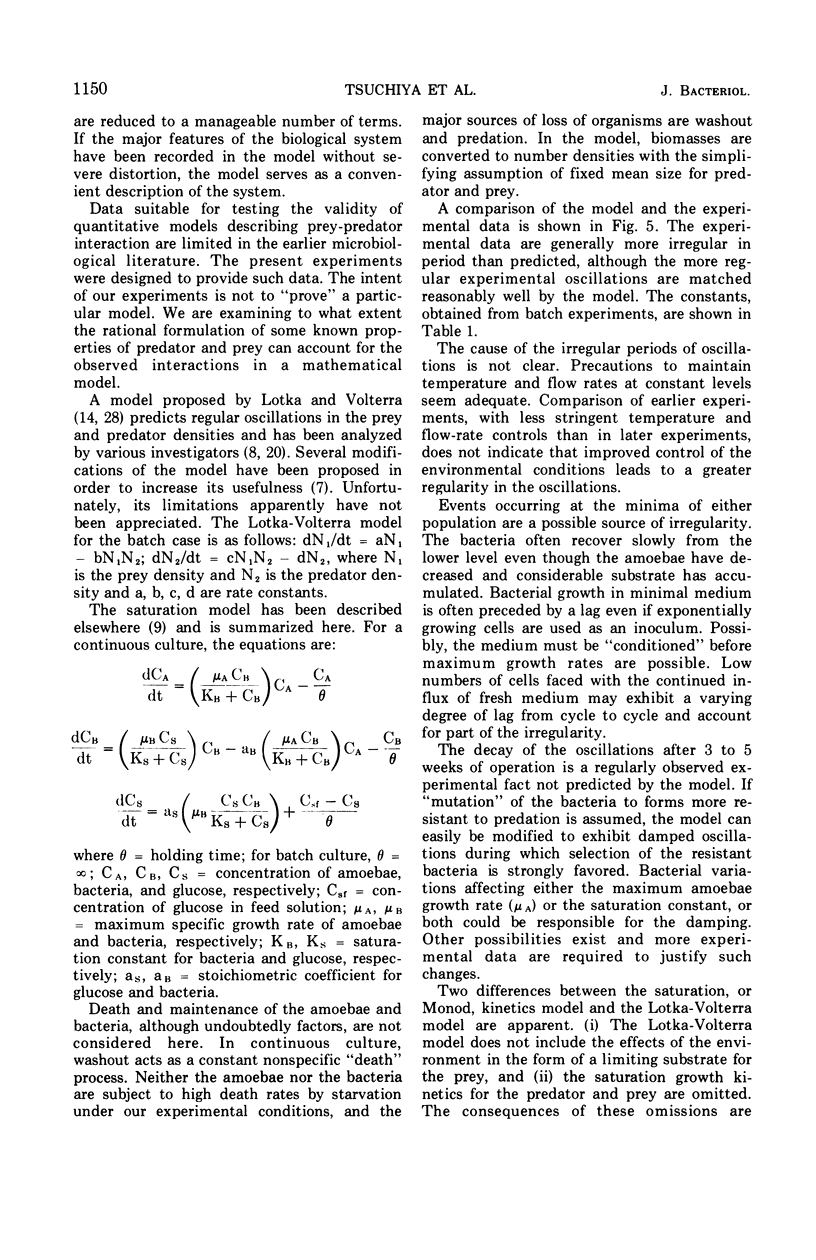
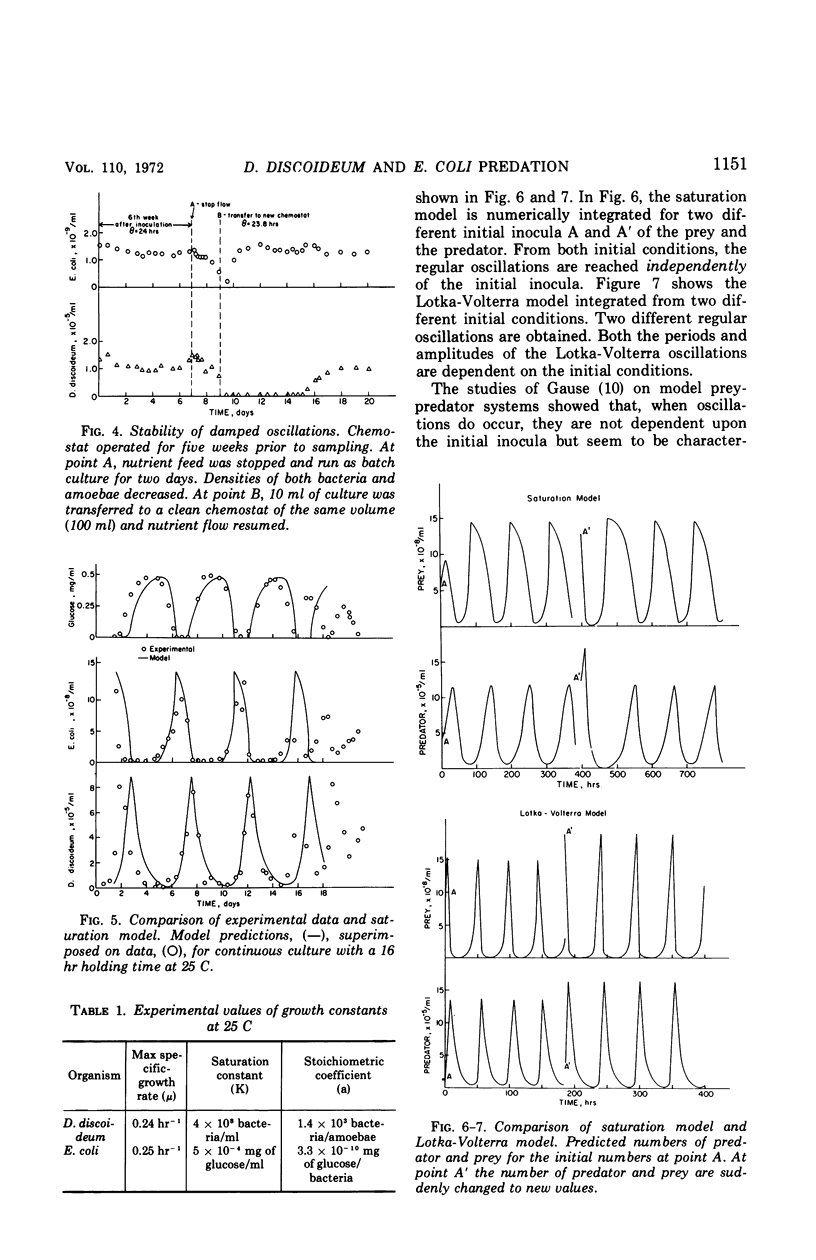
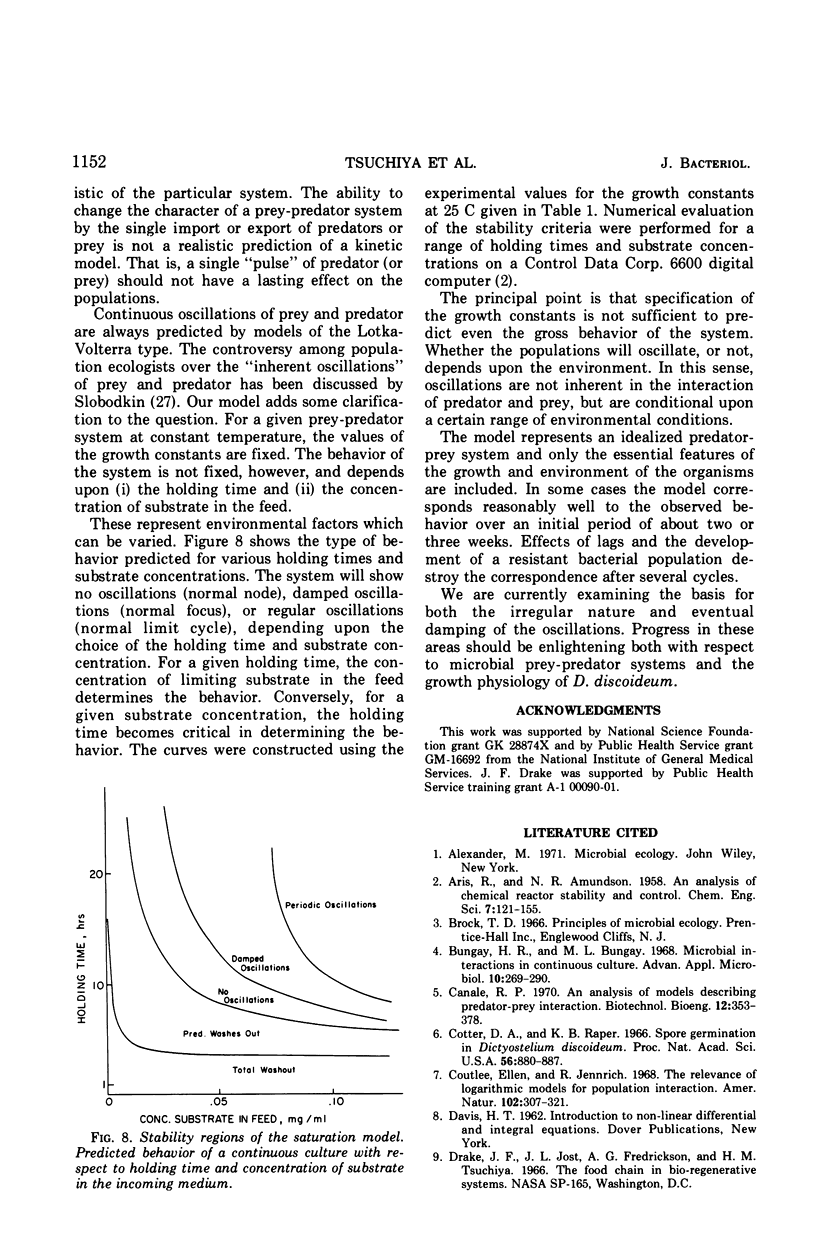
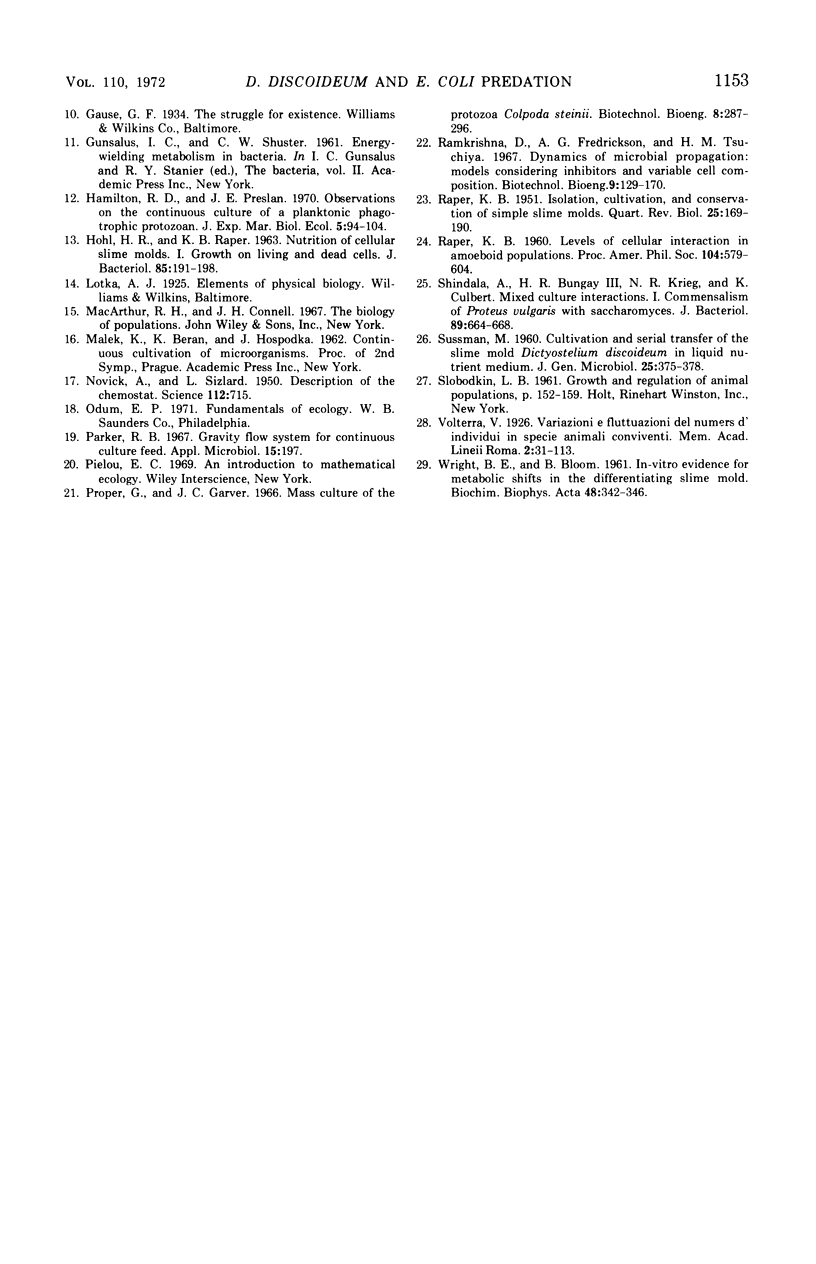
Selected References
These references are in PubMed. This may not be the complete list of references from this article.
- Bungay H. R., 3rd, Bungay M. L. Microbial interactions in continuous culture. Adv Appl Microbiol. 1968;10:269–290. doi: 10.1016/s0065-2164(08)70194-1. [DOI] [PubMed] [Google Scholar]
- Cotter D. A., Raper K. B. Spore germination in Dictyostelium discoideum. Proc Natl Acad Sci U S A. 1966 Sep;56(3):880–887. doi: 10.1073/pnas.56.3.880. [DOI] [PMC free article] [PubMed] [Google Scholar]
- HOHL H. R., RAPER K. B. Nutrition of cellular slime molds. I. Growth on living and dead bacteria. J Bacteriol. 1963 Jan;85:191–198. doi: 10.1128/jb.85.1.191-198.1963. [DOI] [PMC free article] [PubMed] [Google Scholar]
- NOVICK A., SZILARD L. Description of the chemostat. Science. 1950 Dec 15;112(2920):715–716. doi: 10.1126/science.112.2920.715. [DOI] [PubMed] [Google Scholar]
- Parker R. B. Gravity flow system for continuous culture feed. Appl Microbiol. 1967 Jan;15(1):197–197. doi: 10.1128/am.15.1.197-.1967. [DOI] [PMC free article] [PubMed] [Google Scholar]
- RAPER K. B. Isolation, cultivation, and conservation of simple slime molds. Q Rev Biol. 1951 Jun;26(2):169–190. doi: 10.1086/398077. [DOI] [PubMed] [Google Scholar]
- WRIGHT B. E., BLOOM B. In vivo evidence for metabolic shifts in the differentiating slime mold. Biochim Biophys Acta. 1961 Apr 1;48:342–346. doi: 10.1016/0006-3002(61)90484-x. [DOI] [PubMed] [Google Scholar]


